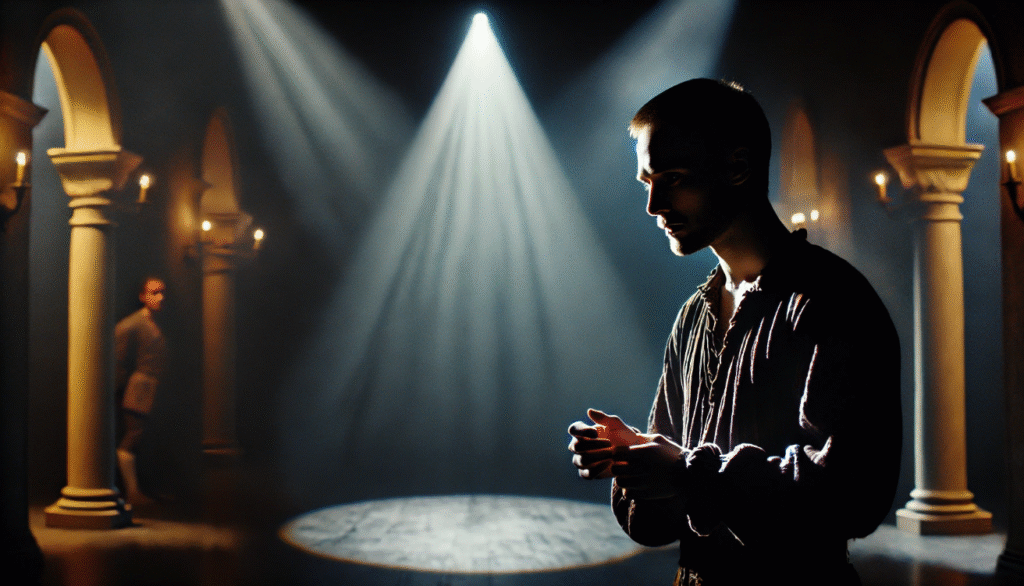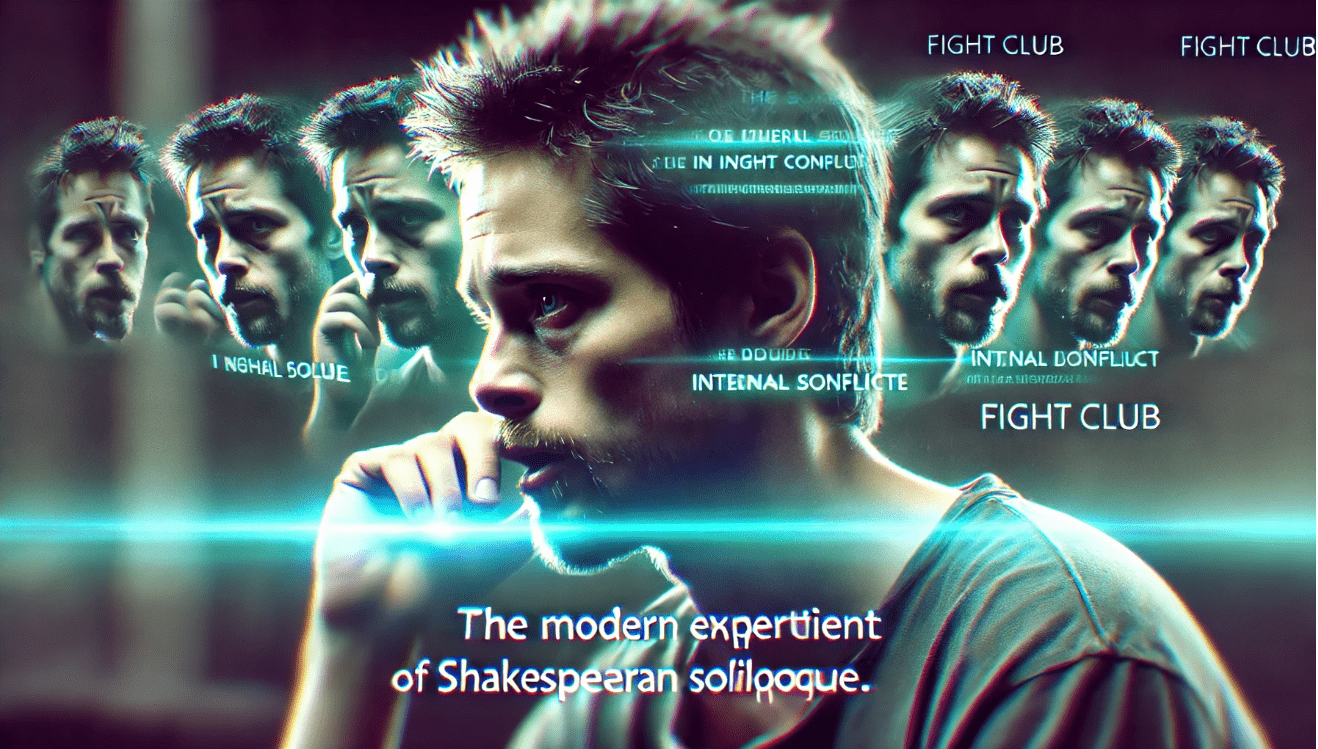
How the Impact of Soliloquies on the Pacing of Shakespeare’s Plays Enhances Dramatic Tension and Audience Engagement
Have you ever wondered why certain scenes in Shakespeare’s plays feel so intense, while others seem to slow down time? The secret often lies in one of his most powerful storytelling devices: the soliloquy. In Shakespeare’s works, the impact of soliloquies on the pacing of his plays isn’t just a stylistic choice—it’s a technique that enhances dramatic tension and pulls audiences deeper into the story. But how exactly do these reflective monologues influence the flow of a play? And what makes them so crucial to audience engagement?
This article will explore how soliloquies shape the pacing of Shakespeare’s plays, heighten the tension, and create unforgettable moments of connection with the audience. By the end, you’ll understand not only the mechanics behind these powerful speeches but also how they continue to resonate in modern theater and film. Ready to uncover the mystery behind the pacing and drama that keeps us hooked? Let’s dive in! 👇
Table of Contents
Toggle1: Understanding the Role of Soliloquies in Shakespeare’s Plays
Shakespeare’s soliloquies are more than just speeches—they’re windows into the hearts and minds of his characters. These moments of self-reflection allow the audience to witness the character’s inner turmoil, motivations, and complex thoughts, all in a single, powerful monologue. But what exactly makes them so impactful, especially when it comes to pacing and engagement?
What Is a Soliloquy? 🤔
In simple terms, a soliloquy is a speech delivered by a character when they are alone on stage (or think they are), revealing their thoughts and emotions directly to the audience. Unlike a monologue, which may be spoken to another character, a soliloquy is purely introspective.
In plays like Hamlet, Macbeth, and Julius Caesar, soliloquies allow characters to pause the action and reflect on their internal conflicts. This gives the audience crucial insight into their motivations, which builds both tension and empathy.
Why Did Shakespeare Use Soliloquies? 🎭
Shakespeare used soliloquies strategically to enhance the emotional depth and narrative complexity of his plays. Here’s how:
- Character Development: Soliloquies provide deep insight into a character’s state of mind. Take Hamlet’s famous “To be or not to be” speech—this moment allows the audience to grasp Hamlet’s existential crisis and indecision, which drives much of the play’s tension.
- Plot Advancement: By using soliloquies, Shakespeare could slow the pacing at key moments, allowing audiences to digest complex emotions and ideas. This dramatic pause serves to heighten the tension before the next big event unfolds.
- Emotional Connection: A well-delivered soliloquy creates an intimate connection between the audience and the character. When characters open up about their inner struggles, we empathize with them, making the drama feel more real and personal.
Soliloquy vs. Monologue 🎙️
Though they are often confused, there’s a distinct difference between soliloquies and monologues. A monologue is usually a long speech directed at another character, whereas a soliloquy is a private reflection. The soliloquy’s power comes from the character’s honesty and vulnerability, giving the audience a direct link to their emotional journey.
The Power of Soliloquies in Enhancing Pacing ⏱️
The role of soliloquies extends beyond character and plot development—they are crucial for controlling pacing. By taking a moment to reflect, Shakespeare allows the audience to pause, process, and anticipate the next turn in the story. Soliloquies make us wait for a resolution, which can dramatically increase tension.
2: How Soliloquies Affect the Pacing of Shakespeare’s Plays
The pacing of a play is crucial for maintaining audience engagement. Without proper pacing, the story can feel rushed or sluggish. Soliloquies, when used effectively, are powerful tools that help control the rhythm of Shakespeare’s works, adding both depth and suspense to the narrative. But how do these monologues impact the pacing, exactly? Let’s explore.

Slowing Down the Action for Reflection ⏳
One of the most noticeable effects of soliloquies on pacing is how they slow down the action, giving both the character and the audience a moment to pause and reflect. For example, in Hamlet, the famous “To be or not to be” soliloquy is a moment of intense introspection that halts the plot for a while. While the rest of the action in the play moves forward, Hamlet takes time to grapple with existential questions, offering the audience a deeper understanding of his inner turmoil.
This slowdown in pacing serves several important purposes:
- Character Insight: It allows the audience to gain valuable insight into the character’s emotional state and motivations.
- Tension Building: By pausing the action, Shakespeare builds anticipation. The audience knows something big is about to happen, but the character is stuck in thought, creating suspense.
- Heightening Emotional Impact: Slowing down the pacing through soliloquies often intensifies the emotional weight of the scene that follows.
Speeding Up the Action Through Decision-Making ⚡
While soliloquies can slow the action, they can also serve to push the narrative forward. In Macbeth, for instance, Macbeth’s soliloquy before he kills King Duncan—“Is this a dagger which I see before me?”—accelerates the pacing as it highlights his decision-making process. The internal conflict expressed in the soliloquy fuels the action, ultimately propelling the play toward its tragic conclusion.
In these cases, soliloquies:
- Clarify Character Decisions: The soliloquy reveals the character’s mindset, showing the audience the exact moment when they decide to act (or not act).
- Create a Turning Point: Many of Shakespeare’s most crucial plot shifts are preceded by soliloquies, which act as turning points in the narrative. These moments speed up the pacing by transitioning from reflection to action.
- Shift the Plot’s Direction: Soliloquies often mark pivotal moments when the character’s internal thoughts directly lead to changes in the plot.
Balancing Pacing: Tension Through Contrast ⚖️
Another key impact of soliloquies on pacing is their ability to create balance. Shakespeare uses soliloquies strategically to shift between fast-paced action and slow, reflective moments. This contrast adds a dynamic quality to the play, keeping the audience engaged throughout.
For example:
- Action Scenes vs. Reflection: After intense action scenes (such as battles or confrontations), soliloquies provide a much-needed break, allowing the audience to process the chaos and catch their breath before the next big event.
- Emotional Pause: In Macbeth, after moments of violence, the audience is given a chance to reflect on the aftermath through soliloquies, such as Lady Macbeth’s “Out, damned spot!” This reflection adds emotional depth and prepares the audience for the next chapter in the story.
3: The Impact of Soliloquies on Dramatic Tension

Dramatic tension is the heartbeat of any engaging story. Without it, the plot can feel flat, predictable, and lack emotional impact. Shakespeare masterfully uses soliloquies to inject layers of tension into his plays, keeping audiences on edge and fully invested in the narrative. But how do these introspective speeches create such suspense? Let’s break it down.
Revealing Inner Conflict 💭
One of the most significant ways soliloquies build dramatic tension is by exposing a character’s internal conflict. These speeches give the audience direct access to a character’s deepest thoughts, doubts, and fears. This insight into their mental struggles allows us to feel the tension that the character is experiencing internally, which, in turn, ramps up the tension for the entire story.
For example, in Hamlet, the “To be or not to be” soliloquy reveals Hamlet’s philosophical dilemma about life and death. As he weighs his options, the audience becomes painfully aware of his indecision. This moment of internal conflict not only builds suspense but also raises questions about what Hamlet will do next, keeping the audience guessing.
Creating Uncertainty and Suspense 🔍
Soliloquies often leave the audience in suspense by introducing uncertainty. Characters reveal their thoughts and intentions, but those intentions may not always be clear, or they might conflict with their actions. This unpredictability creates an atmosphere of tension.
In Macbeth, for example, when Macbeth contemplates murdering King Duncan, his soliloquy expresses doubt and ambition. While he’s already made the decision, the soliloquy builds suspense because the audience wonders whether he will follow through with his plan or change his mind.
By exposing a character’s hesitation or moral struggle, soliloquies set up moments of dramatic tension that keep the audience on the edge of their seats, wondering how the character will ultimately act.
Foreshadowing and Building Anticipation 🔮
Another key way soliloquies contribute to dramatic tension is through foreshadowing. Shakespeare often uses a character’s soliloquy to hint at future events, creating a sense of anticipation in the audience. This technique builds tension because the audience becomes aware of the consequences before the characters do.
For instance, in Macbeth, the soliloquy where he envisions the dagger leads us to anticipate the violent act to come. We know that something terrible is about to happen, which creates tension as we wait for the inevitable.
By giving us a sneak peek into a character’s intentions or the upcoming action, soliloquies ensure that every decision feels fraught with tension. The audience feels the weight of what’s to come, heightening the emotional stakes.
Making the Audience Empathetic 🧠
Soliloquies also help the audience empathize with a character, especially when they express vulnerability or self-doubt. When we hear a character’s raw emotions or fears, it creates a deeper emotional connection, making their struggles feel more real. This empathy can amplify the tension because we become more emotionally invested in the character’s outcome.
Consider Lady Macbeth’s soliloquy in Macbeth, where she grapples with her guilt and the desire for power. As the audience, we understand her growing desperation and see her unravel emotionally, which only intensifies the suspense around her fate.
4: Soliloquies and Audience Engagement
Soliloquies do more than just reveal a character’s thoughts—they actively engage the audience, creating a deeper connection between the viewer and the play. These intimate moments allow us to step inside the character’s mind, making us feel what they feel. But how exactly do soliloquies enhance audience engagement? Let’s explore.

Creating a Connection with the Character 💬
One of the most powerful ways soliloquies engage the audience is by creating a personal bond between the character and the viewer. When a character speaks directly to us—often in isolation—we become privy to their innermost thoughts and desires. This personal connection pulls us into their emotional world, making us care about their fate.
For example, Hamlet’s “To be or not to be” soliloquy invites us to ponder life’s deepest questions alongside him. As he contemplates existence, we are right there with him, feeling the weight of his struggle. This shared emotional experience draws the audience closer to the character, turning passive viewers into active participants in the drama.
The Power of Emotional Vulnerability 💔
Soliloquies often expose a character’s emotional vulnerability, which can deeply resonate with the audience. By revealing their inner conflicts, doubts, and fears, characters allow us to see them at their most raw and human. This vulnerability makes the audience empathize with their struggles, making the drama feel more immediate and impactful.
In Macbeth, Lady Macbeth’s soliloquy as she tries to wash away the guilt of her actions makes her more relatable. Her emotional breakdown humanizes her, even as she sinks further into madness. The audience feels her desperation and is drawn into her emotional turmoil, which heightens engagement with the play.
Inviting the Audience to Experience the Drama 🔄
Soliloquies also invite the audience to experience the drama from the character’s perspective. This unique viewpoint allows viewers to see events unfolding through the lens of someone directly involved in the conflict, making every moment feel more intense and personal.
In Julius Caesar, Brutus’ soliloquy before deciding to join the conspiracy against Caesar forces the audience to witness his internal struggle. We’re not just observing history; we’re living through the moment with him, torn between loyalty and ambition. This perspective amplifies the emotional stakes and makes the unfolding events more compelling.
Encouraging Reflection and Discussion 🤔
Soliloquies often present philosophical or moral dilemmas that encourage the audience to reflect on the themes of the play. These moments don’t just serve the plot; they challenge us to think about deeper questions and apply them to our own lives. Hamlet’s soliloquy, for instance, raises existential questions about life, death, and morality that transcend the play itself.
5: Examples of Famous Soliloquies and Their Impact on Pacing and Tension

Shakespeare’s soliloquies are some of the most iconic passages in literature, each serving a specific purpose in both pacing and dramatic tension. These speeches don’t just reveal character thoughts; they actively shape the direction of the plot and how we experience the drama. Let’s explore some famous soliloquies and their direct impact on pacing and tension.
1. Hamlet: “To Be or Not to Be” 🎭
Perhaps the most famous soliloquy of all, Hamlet’s “To be or not to be” speech is a moment of deep introspection and existential questioning. This soliloquy occurs during the height of Hamlet’s indecision and philosophical turmoil, effectively slowing the pacing of the play.
- Impact on Pacing: The soliloquy pauses the action, providing the audience with a deep dive into Hamlet’s troubled mind. The play slows down here, allowing the audience to feel his internal conflict.
- Impact on Tension: The tension is amplified because Hamlet is contemplating life and death, and his indecision about whether to act (or not) keeps the audience on edge, unsure of what he will decide.
This speech becomes pivotal because it is a moment of reflection that builds anticipation—what will Hamlet do next? Will he seek revenge, or will he continue to struggle with his inaction?
2. Macbeth: “Is This a Dagger Which I See Before Me?” ⚔️
Macbeth’s soliloquy just before he murders King Duncan is a turning point in the play. This moment exemplifies how soliloquies can accelerate the pacing and push the plot forward.
- Impact on Pacing: Unlike Hamlet’s reflective soliloquy, this one propels the action. Macbeth’s decision to kill Duncan is sealed during this moment of uncertainty, shifting the pace toward a rapid escalation of violence and chaos.
- Impact on Tension: The soliloquy builds tension by showing Macbeth’s internal struggle with guilt and ambition. The appearance of the dagger represents his descent into madness, and the audience feels the weight of the decision he is about to make.
This speech directly influences the fast-moving events that follow, heightening both dramatic and emotional tension in the play.
3. Macbeth: “Out, Damned Spot!” 💧
Lady Macbeth’s soliloquy in Act 5, where she attempts to wash away the bloodstains from her hands, is a powerful moment of psychological breakdown. It’s a great example of how soliloquies deepen tension through emotional vulnerability.
- Impact on Pacing: This soliloquy slows down the action once again, creating a pause in the plot that allows the audience to witness Lady Macbeth’s mental unraveling. It’s a brief but intense moment that contrasts sharply with the faster-paced scenes earlier in the play.
- Impact on Tension: The tension here is psychological. Lady Macbeth’s guilt has caught up with her, and the audience feels the weight of her madness. The tension arises not just from what she says, but from the underlying sense that she can never escape her crimes.
This soliloquy amplifies the play’s tragic nature, as Lady Macbeth’s downfall is inevitable. The emotional intensity it evokes makes the audience anxious for her fate.
4. Julius Caesar: “Cowards Die Many Times Before Their Deaths” ⚔️
In Julius Caesar, Brutus’ soliloquy reveals his internal conflict about betraying Caesar for the greater good of Rome. It’s a moment of moral reflection, and it directly impacts the pacing of the play by leading to a pivotal decision.
- Impact on Pacing: This soliloquy speeds up the pacing by clarifying Brutus’ decision to join the conspiracy. Once his resolve is set, the plot quickly moves toward Caesar’s assassination.
- Impact on Tension: The soliloquy raises the stakes, as the audience realizes that Brutus is torn but ultimately convinced that the assassination is necessary. Tension mounts because we now know that Brutus will play a crucial role in the dramatic shift of the narrative.
Brutus’ speech creates anticipation and foreshadows the upcoming chaos, making it a key moment in the play’s rising action.
5. Richard III: “Now is the Winter of Our Discontent” ❄️
In Richard III, the opening soliloquy sets the tone for the entire play. Richard’s speech is full of manipulation and self-interest, establishing him as a villain who is willing to do anything to seize power.
- Impact on Pacing: This soliloquy moves the play’s pace forward immediately by laying out Richard’s plans and motivations. It serves as the catalyst for the action that follows, initiating the political turmoil that will unfold.
- Impact on Tension: The tension builds as Richard reveals his scheming, and we know that his words are not just idle musings—they are setting the stage for treachery and conflict. The audience is gripped with anticipation as they wait to see how his plans will unfold.
6: The Modern Relevance of Soliloquies in Theater and Film

Shakespeare’s soliloquies have stood the test of time, not only captivating audiences in the theater but also influencing modern storytelling in film and television. While the form may seem ancient, the core function of soliloquies—revealing inner conflict, advancing the plot, and creating dramatic tension—remains highly relevant today. Let’s explore how soliloquies continue to impact modern theater and film, and why they are still so effective.
Soliloquies in Modern Theater 🎭
While Shakespeare’s plays are timeless, their structure and devices, especially soliloquies, continue to influence modern playwrights. Many contemporary playwrights use soliloquies to give audiences insight into a character’s thoughts and emotions, deepening our understanding of their struggles and motivations.
- Character Depth and Emotional Impact: Modern soliloquies are often used to reveal complex emotions or moral dilemmas. Just as Hamlet’s famous soliloquy reveals his existential crisis, modern theater frequently uses soliloquies to expose characters’ inner worlds. These moments help the audience connect with the character on a more personal level.
- Pacing and Tension: Just like in Shakespeare’s plays, soliloquies in modern theater can either slow down the pacing for reflection or propel the action forward. They create dramatic pauses that heighten tension, much like in classic works.
A great example is Tommy in “The Who’s Tommy”, a modern musical where the lead character has a soliloquy that reflects his internal turmoil, much like Shakespeare’s tragic heroes. It’s these reflective moments that continue to make soliloquies a staple in powerful storytelling.
Soliloquies in Film 🎬
In film, soliloquies often take the form of voiceovers or monologues, allowing the audience to hear a character’s thoughts directly. Though the setting and delivery may change, the purpose remains the same: to create tension, build character, and add depth to the narrative.
- Voiceovers as Modern Soliloquies: A prime example of this is in Fight Club, where Edward Norton’s character uses voiceovers to express his inner conflicts and frustrations, much like Hamlet’s reflections. The audience is able to see the character’s thoughts as they unfold, creating suspense and deepening our connection to the character’s internal battle.
- Inner Conflict on Screen: Soliloquies are often used in films to explore characters’ moral dilemmas, like in The Godfather. Michael Corleone’s quiet moments of contemplation—where he weighs the consequences of his actions—serve the same purpose as Shakespeare’s soliloquies: they allow us to understand the character’s deepest conflicts, making their actions more impactful.
The Continuing Influence in Popular Culture 🎥
Soliloquies are not only limited to the stage or classic films—they continue to appear in popular TV series, dramas, and even video games. The modern audience still craves these reflective, emotional moments that soliloquies offer.
- TV Shows: In shows like Breaking Bad, Walter White’s monologues often serve as a modern-day equivalent of soliloquies, offering viewers insight into his moral decline and internal struggles. The tension in these moments keeps the audience hooked, much like the soliloquies of Shakespeare’s tragic heroes.
- Video Games: Soliloquies also find a place in video games, particularly in narrative-driven games like The Last of Us or Max Payne, where characters voice their internal struggles or contemplate their next moves. These reflective monologues engage players by allowing them to experience the emotional weight of a character’s decisions firsthand.
The Lasting Impact of Soliloquies on Pacing, Tension, and Engagement 🎭
Shakespeare’s soliloquies are far more than just moments of poetic reflection—they are masterful tools that shape the pacing, build dramatic tension, and keep audiences deeply engaged. From Hamlet’s existential musings to Lady Macbeth’s unraveling guilt, these soliloquies offer invaluable insight into characters’ inner worlds, creating an emotional bond that resonates with viewers across centuries.
As we’ve explored, soliloquies play a crucial role in pacing by either slowing the action to build suspense or propelling the story forward with critical decisions. They also serve as powerful instruments of tension, pulling the audience deeper into the drama by revealing inner conflicts, foreshadowing events, and sparking empathy. Whether on the stage or screen, these reflective moments continue to captivate audiences, making them a staple in modern storytelling as well.
Frequently Asked Questions (FAQs)
1. What is a soliloquy in Shakespeare's plays?
A soliloquy is a speech given by a character when they are alone on stage, sharing their thoughts and emotions with the audience. It allows the character to express inner conflict or personal reflections, which can advance the plot and build tension.
2. How do soliloquies affect the pacing of a Shakespeare play?
Soliloquies can slow down the pacing by allowing characters to reflect and reveal their inner struggles, creating dramatic pauses. Alternatively, they can speed up the pacing by marking key decisions or actions that propel the story forward, such as in Macbeth before the murder of Duncan.
3. Why are soliloquies important in Shakespeare’s plays?
Soliloquies are important because they provide deep insight into a character’s thoughts, emotions, and motivations. They allow the audience to connect with the character on a more intimate level, making the play more engaging and increasing its dramatic impact.
4. How do soliloquies build dramatic tension?
Soliloquies create dramatic tension by exposing a character’s inner conflict, revealing uncertainties or moral dilemmas. These moments leave the audience in suspense, wondering how the character will resolve their struggle and what consequences will follow.
5. Can soliloquies in Shakespeare’s plays be found in modern theater or film?
Yes, soliloquies continue to be used in modern theater and film, often in the form of voiceovers or monologues. They serve the same purpose of providing insight into a character’s mind, advancing the plot, and building tension in contemporary storytelling.
6. How do soliloquies help the audience engage with the play?
Soliloquies engage the audience by revealing a character’s vulnerability, emotions, and personal struggles. This direct insight into a character’s thoughts builds empathy, making the audience feel more connected to the character and invested in the drama.
7. What role do soliloquies play in creating suspense in Shakespeare’s plays?
Soliloquies heighten suspense by showing a character’s uncertainty, inner conflict, or plans, which leaves the audience anticipating their next move. The tension builds as the audience is unsure whether the character will act on their thoughts or change course.
8. How can soliloquies be used in modern media like TV shows or movies?
In modern media, soliloquies appear as voiceovers or inner monologues, allowing characters to express their thoughts and decisions. Shows like Breaking Bad and movies like The Godfather use this technique to deepen the audience’s understanding of the characters and heighten the emotional stakes.
